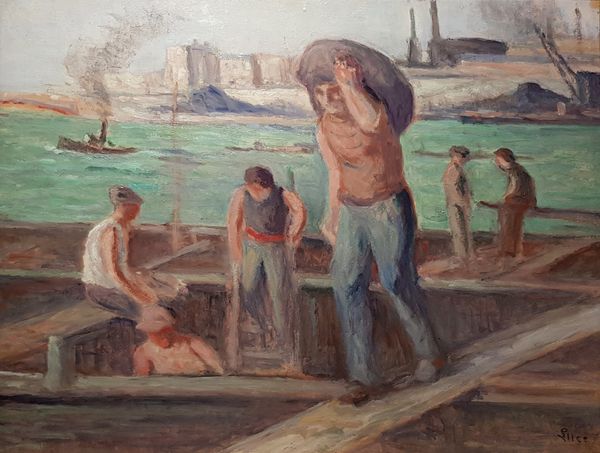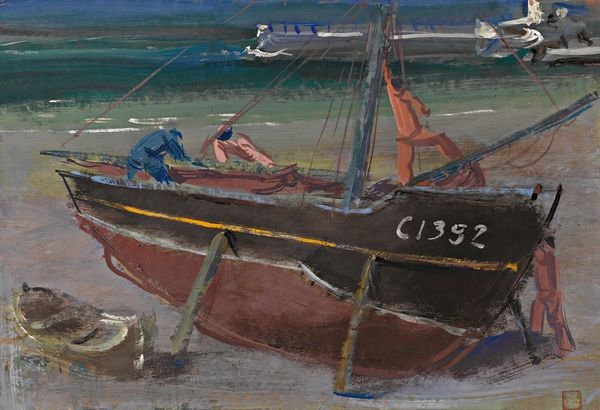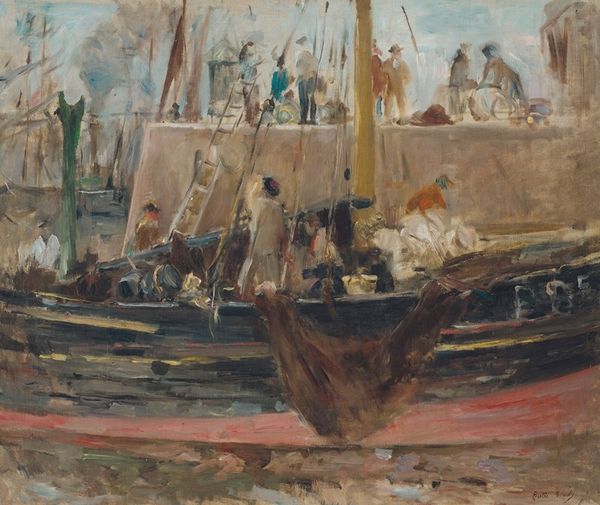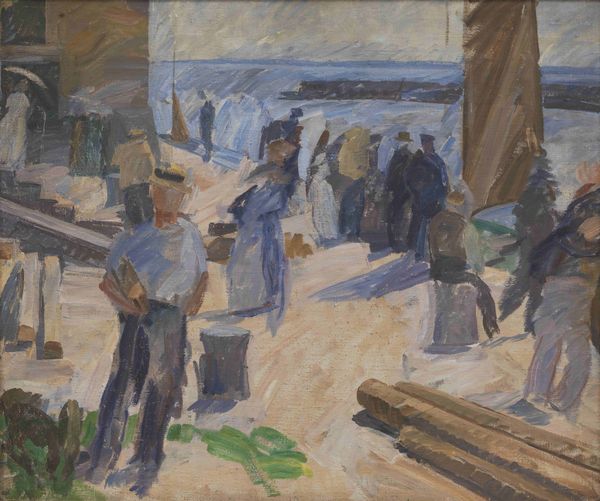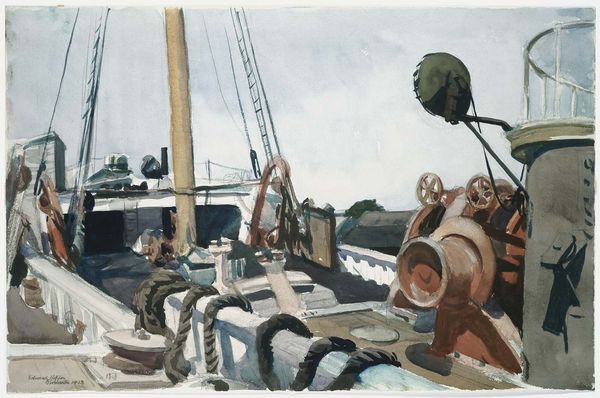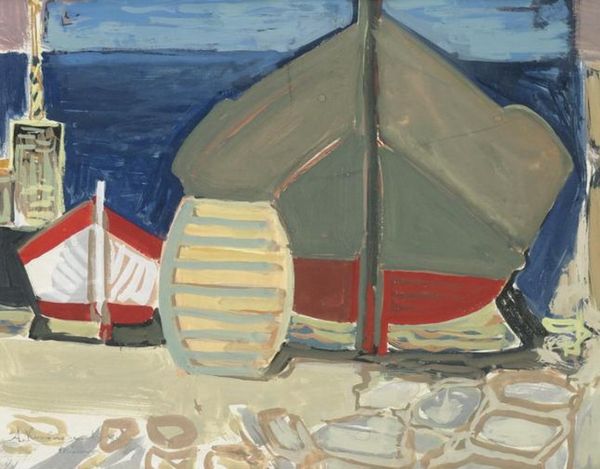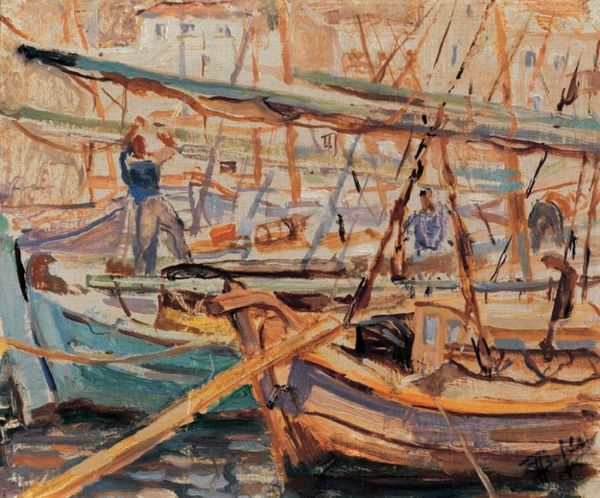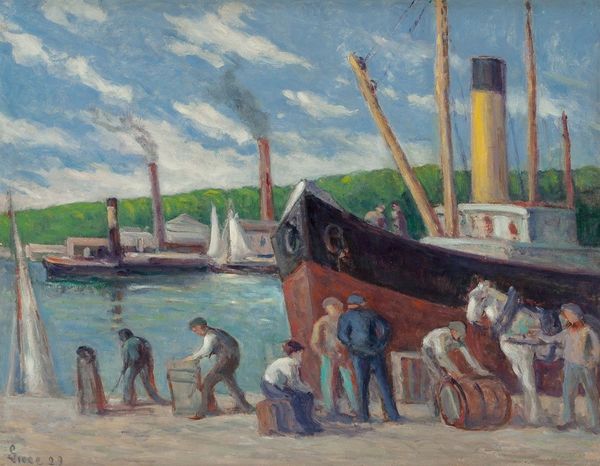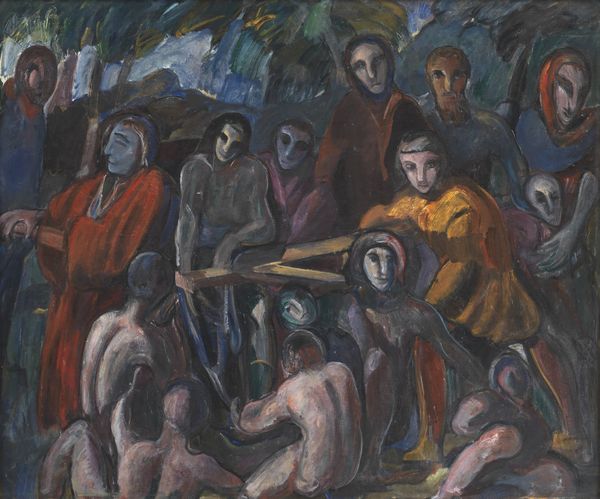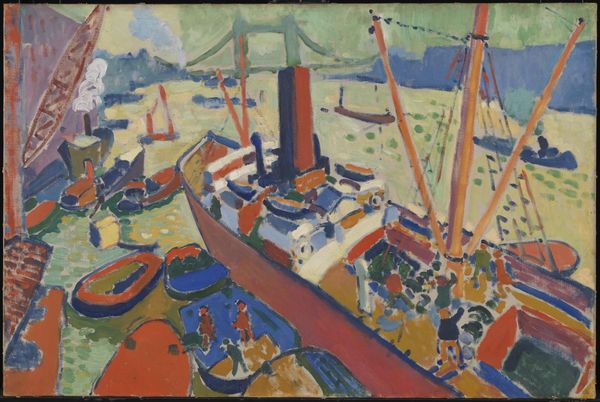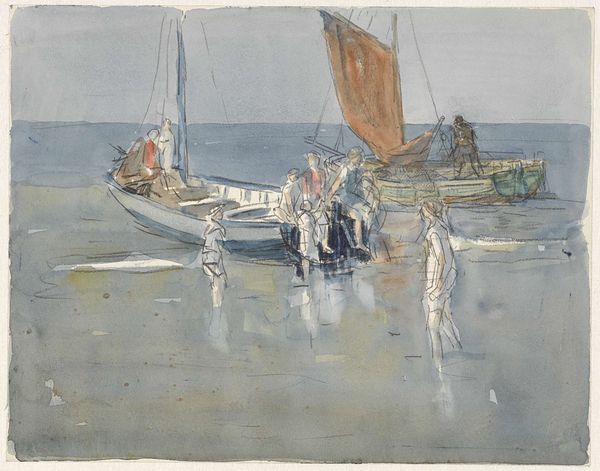
Dimensions: height 637 mm, width 805 mm
Copyright: Rijks Museum: Open Domain
Curator: Let's discuss Gerrit van Blaaderen's "Haven te Douarnenez," a gouache painting likely created between 1920 and 1924. Editor: My immediate reaction is a certain weightiness. The subdued color palette, mostly variations of rust and ochre, coupled with the blocky forms, makes it feel grounded and dense. Curator: Indeed. The composition emphasizes the collective experience of labor. Van Blaaderen portrays the fishermen of Douarnenez, a port in Brittany, not as individuals, but as a workforce. Notice the uniformity of their clothing—almost like uniforms. This visual element reinforces the social identity imposed upon them as laborers. Editor: And how the almost geometrical simplification lends a primitive feel to the forms. Consider the reduced color spectrum. Semiotically, rust indicates not only a certain age, but also hints at weathering, perhaps speaking to the enduring trials of working so close to the sea. Curator: Absolutely. Think of the broader sociopolitical context of post-war Europe. These kinds of figural representations of laborers can be considered through a lens of social realism, wherein the intention often was to foreground the plight and the solidarity of the working class. How the painting resists sentimentalizing or romanticizing these figures, though, also feels worth pointing out. Editor: I agree, and that resistance is enhanced through what seems to me the deliberate flattening of the space. The artist appears far more concerned with patterns, colors, and shape relations across the entire pictorial surface. I sense the artist trying to create an iconic image more than something resembling literal truth. Curator: Right. This "flattening," the denial of deep perspective, forces us to confront these figures head-on, unmediated by any picturesque illusion. And those somewhat muted colors also point to the material reality of the harbor—the dirt, the fish, the unrelenting presence of the sea itself. These fishermen appear almost as part of this marine landscape. Editor: Looking at the forms now, the repeated verticals provided by masts and even the figures themselves give the painting a surprising sense of dynamism despite its grounded feeling. A series of staccato accents rhythmically lead my eye back into the picture space. Curator: So, when looking at "Haven te Douarnenez," we must consider not just its formal qualities, but also how it actively participates in dialogues about work, identity, and representation in the interwar period. Editor: And I appreciate how the composition makes my eye work. There is visual tension between pattern, form, and plane, and how all the elements combine generates its somber power.
Comments
No comments
Be the first to comment and join the conversation on the ultimate creative platform.
